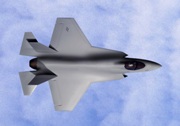Kinetic Die Casting Company Advantages. In manufacturing small and medium sized aluminum parts, hiring an Kinetic Die Casting Company can go a very long way. They specialize in using die casting aluminum into different parts and products using molds. First …
Continue reading
Tag Archives: Porosity
Die Casting Parts Porosity
Kinetic Die Casting Company sales@kineticdc.com is experienced in Solving Quality Problems of Porosity in Die Casting Parts. Porosity in die casting parts is an important issue in metal-working. Porosity, in the science of materials, refers to the presence of gaps or bubbles inside a metal structure. High porosity tends to weaken the final product. Metal parts production companies are given certificates depending on strength, durability and reliability of their products. Hence, this defect must be minimized.
To fully understand this concept, you must be aware of the metal-shaping process behind it. Die casting is a method that uses high pressure to shape a molten metal alloy. For example, zinc is heated on a furnace to reach its melting point. Then, it will be shot to fill the gap between two die halves. That gap is the mold, which contains the shape and details of the final product. As the lump of zinc solidifies, pressure of up to 175 mega Pascal is exerted through the dies. If gases are accidentally mixed during this speedy process, they will result in porosity in die casting parts.
Most of the time, it is impossible to achieve a 100% pure metal piece if die casting is used. Porosity in die casting parts can be minimized by thoroughly cleaning the dies before operations. Pressures and temperatures must also be matched with the type of metal and intended purpose of the part.
To get a price for aluminum die casting parts or die casting tooling, call toll free 800-524-8083 and ask for sales. Or email us at sales@kineticdc.com for a fast response on a price quote.

Kinetic Die Casting Company is located in Southern California. KDC specializes in aluminum and zinc die casting tooling. If you would like a quote, please visit our website:Kinetic Die Casting Company
Porosity in Diecastings
What is Die Casting Porosity? (Die Casting Porosity) In order for you to know what die casting porosity is, you need to know the die casting basics. The most common form of Die Casting Porosity is a kind of factory defect in which die cast parts contain small pockets of void space and air within the metal, causing it to become porous.
Porosity in Die Casting is the air trapped by the metal inside the die casting parts. To know more, a basic knowledge of the die casting process is necessary. Die casting is a process wherein a particular amount of molten metal is put inside a shot cylinder, then it is applied (plunged) with great force with a piston so as to force the metal into a die cast mold or die cast die. During this “plunging process”, air inside the cylinder is forced along with the metal into the die casting mold. It is a very fluid turbulent process. The air forced into the mold with the metal and the metal already inside the mold is forced out of the mold through a series of gates, vents and overflows.
After this, the metal is left to cool down and harden or freeze inside the mold. The metal is then removed as a die cast part. The same process is repeated over again.
Die casting companies use metals which are non-ferrous, or do not contain Iron, as this is the highest factor for oxidation and rusting. Several examples of non-ferrous metals include zinc, aluminum, lead, Magnesium Die Casting, tin and copper. Kinetic Die Casting only uses aluminum die casting and zinc die casting.
In the worst case, die casting parts porosity, weakens die casting parts, if the voids or pockets are very large. Porosity typically matters most in pressure tight die casting parts. When the air escapes through a die casting part, it is typically caused by porosity.
The many forms of Die Casting Porosity are caused by many variables:
- Metal and Mold Temperatures
- Material Cleanliness
- Die Cast Mold Design
- Die Cast Part Design
- Die Casting Machine Pressures
- Die Casting Machine Shot Speed
- Die Casting Spray or Mold Release
- Other forms of porosity can be from “shrinkage” or wall thickness.
Employees of Kinetic Die Casting are POROSITY EXPERTS in die casting parts that need to be free of porosity.
Permalink: https://www.kineticdiecasting.com/kdc/porosity-in-diecastings/
Contact Kinetic Die Casting today if you need “solid” die casting parts.
Kinetic Die Casting, Inc.
6918 Beck Avenue
North Hollywood, California USA 91605
818-982-9200 telephone
818-982-0877 fax
Kinetic Die Casting manufactures custom metal parts to their customer. If you would like more information about Kinetic Die Casting, please visit our website:Kinetic Die Casting Company
Kinetic Auto Parts
Kinetic Die Casting Company Makes Aluminum Auto Parts – A few months ago, an automotive parts customer contacted me; he makes aluminum hydraulic pumps for cars. He asked if he could move his die casting tooling inserts from his current die casting supplier to Kinetic Die Casting Company. He is getting over 50% leakage rejects from his current die casting supplier due to porosity. His product is prone to porosity because it has very thick material areas and very thin material areas. It would take a special effort to improve his production part process.
We gave him a price that was higher than he was currently paying and he agreed. What happened then was, he sent us his tooling inserts and we mounted his die casting inserts in our mold base and made his aluminum automotive pump parts. He was shocked at the difference. He had very few parts that leaked. We succeeded because we process every die casting job as a special job. Our single piece flow has also become single order flow.
I received this same request from that same customer this week, on a different part. He is also losing over 50% of his parts due to porosity leakage in his pumps. He now knows we can help him. The part cost is higher, but his total cost is much lower because he has fewer failures in his product.
Contact Kinetic Die Casting if you are getting bad products and we will help you.
Permalink: https://www.kineticdiecasting.com/kdc/kinetic-auto-parts/ ?
Diecasting Airplane Parts
Die Castings used for many Aircraft Parts. Demand for diecast airplane parts is increasing in the aircraft industry. Airplanes need lightweight materials for mobility. Moreover, planes require durability and resistance to several stresses while flying. Among metals, aluminum is used to serve as frames or skeletons of the aircraft.

In the aircraft industry, the strength of aluminum is significantly increased by high pressure die casting. Aluminum die castings used for airplane parts are strong against torsion and expansion stresses. These are important considerations since a flying aircraft is subjected to several forces.
In the machining process, there is always an associated imperfection called die casting porosity. This is the amount of gas that combines with the solidifying metal, as it cools in the mold. Porosity is characterized by the size and number of air bubbles inside the finished product. There are three levels of porosity. The second and third levels are unacceptable when it comes to machining airplane parts. This is to guarantee safety of the passengers.
Die castings used for airplane parts are usually made of different aluminum alloys. The two most common die casting alloys for aircraft parts are A380 and A413. For example, Al 7075 is commonly used for making frames because of its toughness.
Permalink: https://www.kineticdiecasting.com/kdc/diecasting-airplane-parts/
To get a price for aluminum die casting parts or die casting tooling, call toll free 800-524-8083 and ask for sales. Or email us at sales@kineticdc.com for a fast response on a price quote.

Kinetic Die Casting manufactures custom metal parts to their customer. If you would like more information about Kinetic Die Casting, please visit our website:Kinetic Die Casting Company
Porosity in the Die Casting Process
The steel die cavity is sprayed with a liquid release agent to prevent the molten metal from sticking to the steel cavity. Much like the cook will spray a pan before baking a cake. The spray dissipates into steam because the die is very hot. Porosity is natural in the Die Casting Process. The molten metal is squirted at a very fast speed and under extreme pressure into the die. It is like a running water hose with a thumb on the nozzle. The metal is moving very rapidly as it is forcibly injected into a steel die cavity, the metal picks up voids and air bubbles from the steam and the turbulence of the injection. The metal is squeezed into the die with a piston to evacuate or to remove and compress most of the voids and air pockets. Those voids and air pockets are called die casting porosity. It is a natural occurrence in the production of die casting parts. To read more about die casting porosity, review our web page: http://www.kineticdiecasting.com/porosity.html
Kinetic Die Casting Company 6918 Beck Avenue, North Hollywood, California 91605 USA
E-mail sales@kineticdc.com Toll Free: (800) 524-8083 Local: (818) 982-9200 Fax: (818) 982-0877
Permalink: https://www.kineticdiecasting.com/kdc/porosity-in-the-die-casting-process-2/
Kinetic Die Casting Company
E-mail sales@kineticdc.com / 818-982-9200 / 800-524-8083 Toll Free / 818-982-0877 Fax
6918 Beck Avenue, North Hollywood, California USA 91605,
Kineticdc makes:
Aluminum Heat Sinks
Automotive Die Casting Parts
Airplane Die Casting Parts
Light Fixture Die Casting Parts
Consumer Products Aluminum Parts
Aerospace Die Casting Parts
Military Die Casting Parts
Die Casting Tooling


